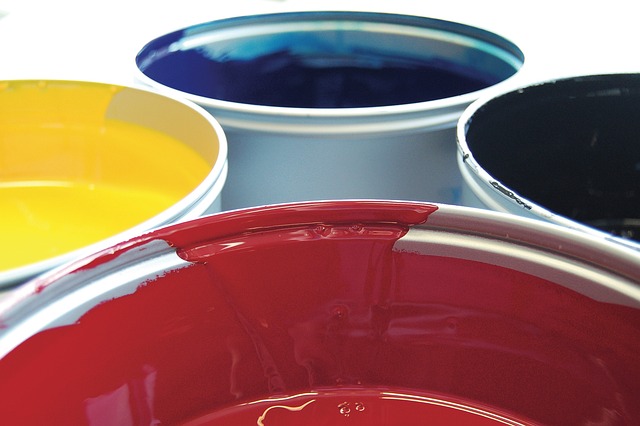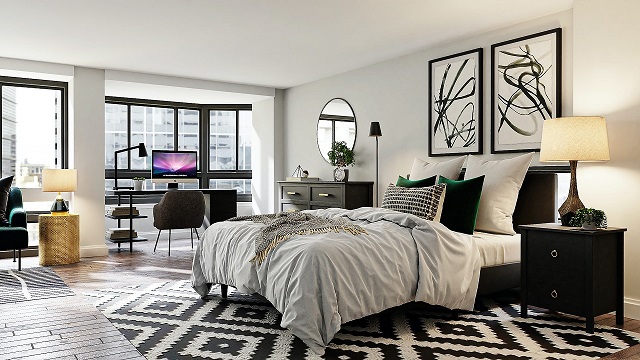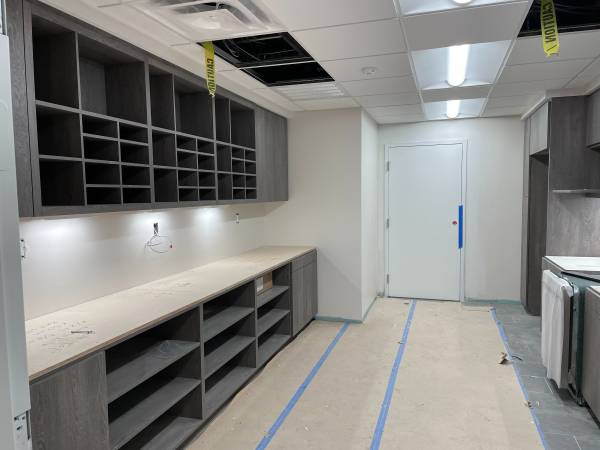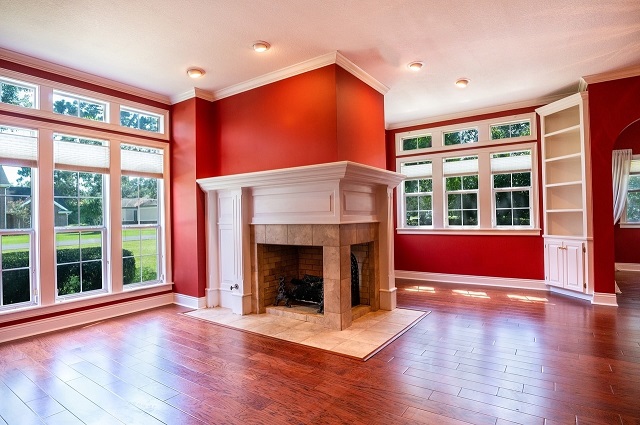Table of Contents
Preparation is Key
Before beginning any painting project, it is crucial to ensure that the surface is clean and free of dust, dirt, and oil. This can be done by washing the walls with a mild detergent solution and allowing them to dry completely. Any holes or cracks should be filled with spackling compound and sanded smooth before painting. Proper preparation of the surface will help the paint adhere better and result in a more professional-looking finish.
In addition to prepping the walls, it is also important to protect the surrounding areas from stray paint splatters. Use painter’s tape to mask off baseboards, trim, ceilings, and any other areas that you want to keep paint-free. Lay down drop cloths to cover the floor and remove or cover any furniture in the room. Taking these steps will help to streamline the painting process and minimize any potential mess or damage to your home.
Choosing the Right Paint Colors
When it comes to selecting the perfect paint colors for your space, it is essential to consider the overall aesthetic you are aiming to achieve. Begin by assessing the room’s natural lighting, as this can greatly influence how colors appear on the walls. For instance, north-facing rooms tend to have cooler light, which may impact how warm or cool tones appear. Conversely, south-facing rooms typically receive warmer light, which can enhance the vibrancy of colors such as sunny yellows or bold reds.
In addition to considering lighting, it is important to take into account the size and function of the room. Lighter hues are often preferred for smaller spaces as they can create an illusion of a larger area. On the other hand, darker shades can add a sense of coziness and intimacy to larger rooms. Understanding the psychology of color can also help guide your decision-making process. For example, blues and greens are known for their calming effects, making them ideal choices for bedrooms or relaxation areas. By strategic selecting paint colors based on these factors, you can create a harmonious and visually appealing environment.
Understanding Different Paint Finishes
When it comes to painting projects, selecting the right paint finish is crucial. There are several options available, each with its own unique characteristics and uses. Common paint finishes include flat, eggshell, satin, semi-gloss, and high-gloss. The choice of finish depends on factors such as the desired look, the amount of traffic or moisture in the area, and the level of maintenance required. Flat finishes are ideal for ceilings and low-traffic areas, while satin and semi-gloss finishes are more suitable for walls and high-traffic spaces. High-gloss finishes offer a shiny, reflective appearance and are often used on trim and doors for a polished look.
Understanding the differences between paint finishes will help you achieve the desired results in your painting project. Flat finishes have a smooth, non-reflective appearance that helps to hide imperfections on walls. Eggshell finishes have a slight sheen and are easier to clean than flat finishes, making them ideal for living rooms and bedrooms. Satin finishes have a subtle gloss and are durable and easy to clean, making them suitable for kitchens and bathrooms. Semi-gloss and high-gloss finishes are even more durable and moisture-resistant, making them perfect for trim, doors, and other high-traffic areas that require frequent cleaning. Selecting the right paint finish will not only enhance the aesthetic appeal of your space but also ensure that your painted surfaces are long-lasting and easy to maintain.
Tools and Supplies Needed for Painting
When embarking on a painting project, it is crucial to have the necessary tools and supplies at hand to ensure a smooth and successful process. Essential tools include paintbrushes, rollers, painter’s tape, drop cloths, paint trays, and stir sticks. These items will allow you to achieve a clean and professional finish while protecting surfaces from accidental spills or drips. Additionally, sandpaper, spackling paste, and a putty knife are handy for preparing walls and repairing imperfections before painting. Having these basic supplies readily available will streamline the painting process and help you achieve optimal results.
In addition to tools, selecting the right paint color and finish is vital for achieving the desired look and feel in a room. Consider factors such as natural light, room size, and furniture when choosing a color palette. Opt for high-quality paint in the appropriate finish, whether it be matte, eggshell, satin, semi-gloss, or high-gloss, depending on the surface and desired durability. Investing in quality paint and supplies will yield a more professional and lasting result, making the effort and preparation worthwhile in the long run.
Proper Techniques for Painting Walls
To ensure a smooth and even finish when painting walls, it is essential to start by properly preparing the surface. This includes cleaning the walls to remove any dirt, dust, or grease that could affect the paint adherence. Repair any cracks or holes with spackling compound, sand the surface to create a smooth canvas, and apply a coat of primer to help the paint adhere better and ensure a more durable finish. Additionally, taping off trim, windows, and baseboards with painter’s tape can help achieve clean lines and prevent paint from bleeding onto adjacent surfaces.
When applying paint to walls, it is crucial to use the right tools for the job. A high-quality roller with the appropriate nap size for the wall texture can help achieve a consistent finish. Start by cutting in the edges with a brush before using a roller for the larger sections to avoid visible brush strokes or roller marks. Work in small sections, keeping a wet edge to blend the paint and prevent lap marks. Finally, apply paint with even pressure and in a consistent direction to achieve a professional-looking result.
• Properly prepare the surface by cleaning, repairing cracks, sanding, and applying primer
• Use painter’s tape to tape off trim, windows, and baseboards for clean lines
• Use a high-quality roller with the right nap size for wall texture
• Cut in edges with a brush before using a roller for larger sections
• Work in small sections to maintain a wet edge and prevent lap marks
• Apply paint with even pressure and consistent direction for professional results
Tips for Painting Trim and Molding
When painting trim and molding, precision is key. Tape off the edges carefully to ensure clean lines and protect the surrounding surfaces from drips and splatters. It’s important to use a quality brush specifically designed for trim work to achieve a smooth and even finish. Avoid applying too much paint at once to prevent drips and buildup, and make sure to allow each coat to dry completely before adding additional layers.
Additionally, consider using a paint sprayer for larger trim and molding projects to achieve a professional-looking result with less effort. This can help you cover larger areas more quickly and evenly. Remember to always work from the top down when painting trim and molding to catch any drips or spills as you go along.
Creating Accents with Paint

When looking to add a touch of personality and depth to a room, creating accents with paint can be a simple yet impactful way to enhance the overall aesthetic. By strategically choosing a wall or specific area to highlight, using a contrasting color or different shade of the existing wall color can draw attention to unique architectural features or focal points within the space. For example, painting a fireplace wall in a different color than the surrounding walls can create a visual focal point and add dimension to the room.
Another way to create accents with paint is by incorporating geometric shapes or patterns onto a wall. This can be achieved through the use of painter’s tape to create clean lines and crisp edges, allowing for the creation of eye-catching designs such as stripes, chevron patterns, or even a modern geometric mural. By playing with different colors and shapes, you can transform a plain wall into a dynamic feature that complements the overall design scheme of the room.
Trendy Painting Techniques to Try
If you’re looking to add a modern flair to your walls, consider trying out the trendy ombre painting technique. Ombre involves blending two or more colors seamlessly to create a gradient effect. To achieve this look, start by choosing colors that transition harmoniously, like blues or pinks. Begin by painting one color at the top of the wall and gradually mix in the second color as you work your way down. Use a large brush to blend the colors together for a smooth transition. Ombre painting can add depth and visual interest to any room, making it a stylish choice for those who want to experiment with color.
Another trendy painting technique to explore is color blocking. Color blocking involves painting geometric shapes or sections of walls in contrasting colors to create a bold and contemporary look. To start, choose two or more colors that complement each other and mark off the sections you want to paint with painter’s tape. When painting, make sure to create clean lines where the colors meet for a crisp finish. Color blocking is a versatile technique that can be customized to suit any aesthetic, from minimalist to eclectic. Consider experimenting with different shapes and color combinations to make a statement in your space.
Maintaining Your Painted Surfaces
To ensure the longevity and vibrancy of your painted surfaces, it is essential to implement proper maintenance practices. Regular cleaning with a mild detergent and water solution can help remove dirt, dust, and grime that can accumulate over time. Avoid using harsh chemicals or abrasive cleaning tools, as they can damage the paint finish and reduce its lifespan. Additionally, addressing any spills or stains promptly can prevent them from setting in and becoming more challenging to remove.
Another important aspect of maintaining your painted surfaces is to keep an eye out for any signs of wear and tear. Inspect the walls and trim periodically for any chipping, peeling, or discoloration. Addressing these issues promptly by touch-up painting can prevent further damage and maintain the overall appearance of the painted surfaces. Remember that regular maintenance is key to preserving the beauty and integrity of your paint job, extending its lifespan, and keeping your space looking fresh and inviting.
Seeking Professional Help when Needed
For some homeowners, tackling a painting project on their own can be overwhelming. Factors like time constraints, lack of experience, or the scope of the project may make seeking professional help a wise decision. Professional painters possess the expertise and tools needed to ensure a high-quality finish, saving you time and potential frustration. By enlisting the help of professionals, you can rest assured that the job will be done efficiently and to your satisfaction.
When considering hiring a professional painter, it’s essential to do your research. Look for reputable painters in your area with positive reviews and a portfolio of their work. Obtain multiple quotes to compare pricing and services offered. Communication is key when working with professionals, so be clear about your expectations and timeline for the project. By entrusting your painting needs to skilled professionals, you can achieve the desired results without the stress and hassle of doing it yourself.


